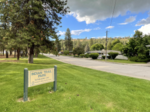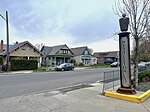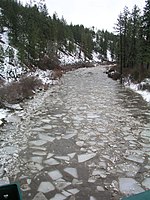Riverside Park Water Reclamation Facility
1952 establishments in Washington (state)Buildings and structures in Spokane County, WashingtonSewage treatment plants in Washington (state)
Riverside Park Water Reclamation Facility is the largest wastewater treatment plant for Spokane, capable of handling up to 150 million gallons a day. During low flow periods, the outflow of the plant comprises up to 20% of the Spokane River's water. Until its construction in 1952 (completed 1958), Spokane dumped raw sewage into the Spokane River resulting in recurrent Typhoid fever outbreaks. A $126 million upgrade to increase capacity to 50,000,000 US gallons (190,000,000 l; 42,000,000 imp gal) a day began in 2016, also adding sub-micron membrane technology filtration. It is part of Spokane's $300 million integrated water quality plan.
Excerpt from the Wikipedia article Riverside Park Water Reclamation Facility (License: CC BY-SA 3.0, Authors).Riverside Park Water Reclamation Facility
Trail 100,
Geographical coordinates (GPS) Address External links Nearby Places Show on map
Geographical coordinates (GPS)
| Latitude | Longitude |
|---|---|
| N 47.696388888889 ° | E -117.47527777778 ° |
Address
Riverside Park Water Reclamation Facility
Trail 100
99205
Washington, United States
Open on Google Maps










